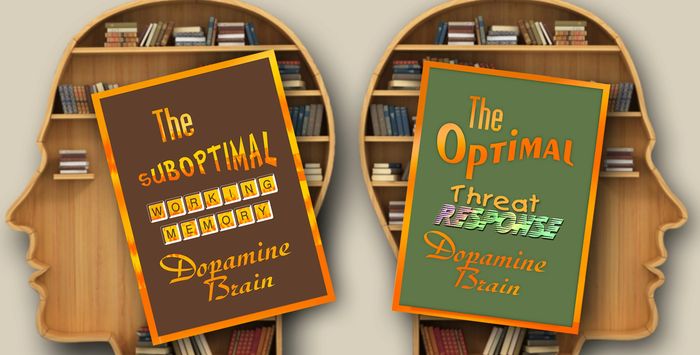To better understand the ADD/ADHD brain and grow beyond calling it a disorder.

Open, but under construction.
No hardhats needed -- only thinking caps.
If you think you know what ADD is, think again . . .
To better understand the ADD/ADHD brain and grow beyond calling it a disorder.

Open, but under construction.
No hardhats needed -- only thinking caps.
If you think you know what ADD is, think again . . .
Dr. Sterling puts the pieces of the ADHD puzzle together to show how the common denominator of suboptimal dopamine for good working memory produces all those "typical" ADHD characteristics.
For the latest information and to join in with comments, questions, and critiques, please visit my newly-established Substack -- ADHD Explainer.

Since its original publication in 2011 and its update in 2013, no other book has educated its readers about ADD as well as the Adult ADD Factbook. I am celebrating the 10th Anniversary of my 2013 Edition. It has stood the test of time and its advanced conclusions based on the research literature have not be challenged or debunked.
I started on a huge intellectual adventure in 2008 which included the reading and analysis of over 25,000 pages of primary research literature related to ADD, dopamine, working memory, threat response capabilities, norepinephrine, sensory sensitivities, academic success, and intelligence. By 2011, I felt compelled to write about my findings, since the understanding of the underlying common denominator to ADD characteristics within the scientific community was far better and beyond anything available in the public domain.
What you are purchasing here is the exact final version of the 2013 edition in the form of a fully searchable pdf file.
This book could have been titled "The Dopamine Paradox."
Dr. Sterling shines a bright light on the scientific findings which make it completely illogical to call the so-called ADD brain a "disorder." He points out clearly that the most powerful common denominator and force for producing almost all of the characteristics used for diagnosing ADD is "suboptimal dopamine presence and function for good working memory, but optimal dopamine presence and function for responding to threat."
Reviewers have labeled the book as ground breaking and paradigm shifting. Give it some time to sink in and you will find yourself understanding so much more about why the Western Hemisphere brainsets are quite different from most other brainsets in the world.

This website is a reflection of what I, a neuroscientist and psychiatrist, have been reading and writing about since 2008. The thousands of pages of research literature that I analyzed between 2008 and 2013 compelled me to write and publish ADD ebooks and paperbacks about what has been called ADD - ADHD for more than 40 years.
The literature was and continues to be clear that the vast majority of all those ADD characteristics you may know about are produced by a powerful common cause.
The literature also leads to no other possible conclusion than this: What we currently call ADD is not logically a disorder. It has a downside and a significant upside. So does the non-ADD brain. Which one is the disorder, then?
It is my hope to make this knowledge more common not only among the public but also among my colleagues in health care. It is unfortunate that it is now over 15 years since a significant turning point took place in 2008 in the research and understanding of the major variables that create both the downside and the upside of the ADD brain and the non-ADD brain. I have been called an ADHD Disrupter who gives you the whole story, not just half of it.
It is way past time to start looking at ADD again in the new bright lights of recent significant research findings.
Viewer repost of February 2014, interview. As of 03/20/2025 it had received over 60k views since October 5, 2016, over 1,900 likes, 272 comments and 393 subscribers.
Choose the Watch on YouTube option to read or write comments there. Visit my ADHD Explainer Videos at Substack to join the conversation with comments, questions and discussions.
Stan Emert of Rainmakers TV, Seattle, Washington interviews psychiatrist Ron Sterling, M.D., about his book published in 2011 and 2013. Among other things, he asks Dr. Sterling "Is ADD even a disorder?"
Visit my ADHDExplainer Videos at Substack to join the conversation with comments, questions and critiques. My 2013 Book is still ahead of its time!
The ADD/ADHD brain downside is suboptimal dopamine for good working memory at baseline.
The ADD/ADHD brain upside is optimal baseline dopamine for excellent threat response.
This means: Those who fit the criteria for what we currently call ADHD
have a brain that is best for allowing optimal threat response (survival, etc.)
but which also creates the high vulnerability to poor working memory which
has its most noticeable effects on academic performance and similar brain activities.
It is this dopamine paradox that makes the West what it is
with both high capabilities for threat response, but not so great
at deeper thinking, pausing, parsing, and impulse control, among other things.
Updated March 20, 2025
©2008-2025 Ron Sterling, MD. All Rights Reserved.
We utilize cookies to optimize your experience here. No personal data is collected. By continuing to use this site, you consent to our use of cookies.